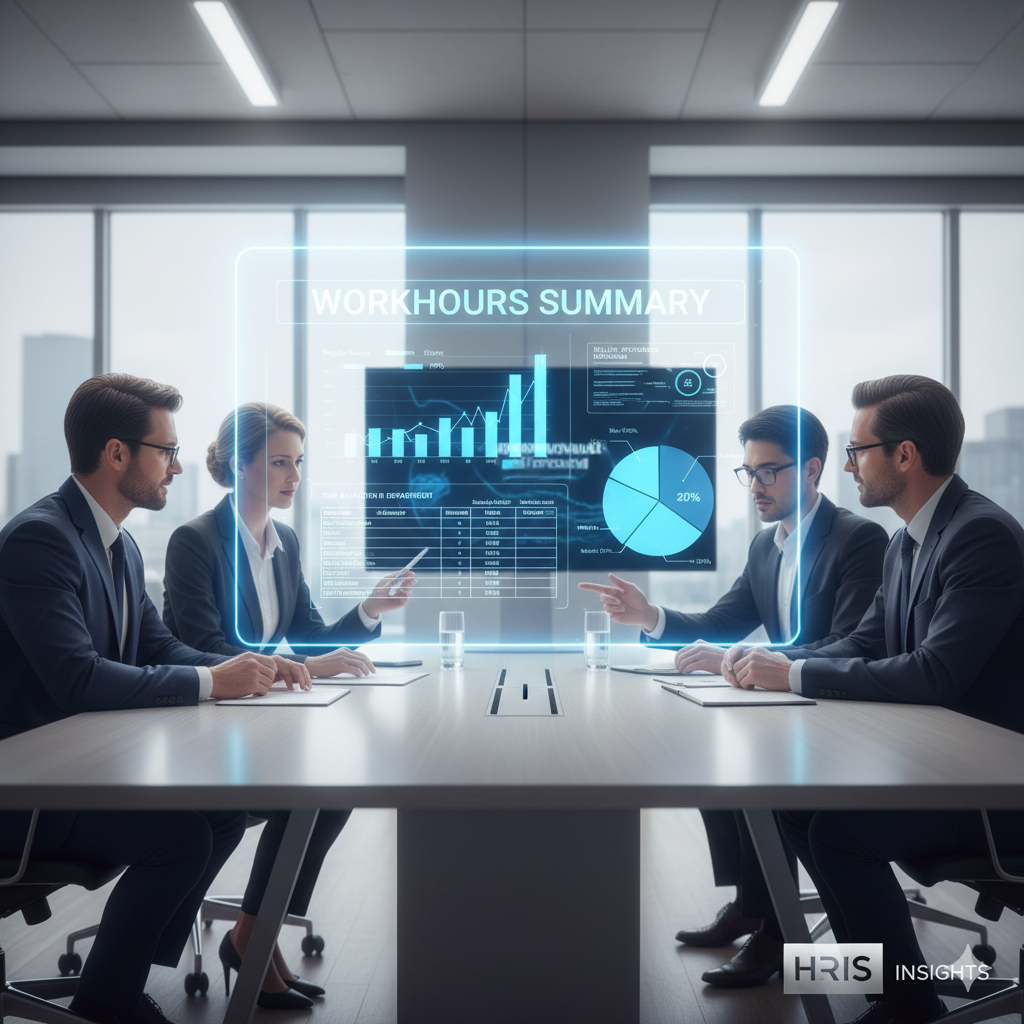Address
Kaypian, San Jose Del Monte City, Bulacan Philippines
Work Hours
Monday to Friday: 8AM - 6PM
Weekend: 10AM - 5PM
Address
Kaypian, San Jose Del Monte City, Bulacan Philippines
Work Hours
Monday to Friday: 8AM - 6PM
Weekend: 10AM - 5PM


Integrated HR. Accurate Payroll.


Integrated HR. Accurate Payroll.

In every organization, managing employee time accurately is vital for ensuring payroll precision, labor cost control, and workforce efficiency. Gone are the days of manual time logs and spreadsheet tracking — today’s businesses rely on Human Resource Information Systems (HRIS) to automate and simplify time management.
One of the most essential tools within an HRIS is the Timekeeping Report, specifically the Workhours Summary. This report provides HR professionals, managers, and business leaders with a clear view of how time is spent across teams, departments, and projects.
In this article, we’ll break down what a Workhours Summary report is, why it’s important, and how HRIS systems help organizations use time data more intelligently.
A timekeeping report in an HRIS system is a detailed record of employees’ working hours, absences, and attendance data. It consolidates clock-in/clock-out entries, overtime, leaves, and shift details into one unified dashboard.
The Workhours Summary is one of the most commonly used reports. It summarizes total working hours for each employee or department within a specific period — daily, weekly, monthly, or pay cycle-based.
This report helps HR teams:
A well-structured HRIS Workhours Summary typically includes:
With modern HRIS systems, this data can be exported, visualized, or integrated directly into payroll software — eliminating manual calculations.
Implementing an HRIS timekeeping system provides numerous advantages over traditional tracking methods:
When time data is accurate and accessible, it creates a foundation for efficient workforce management and strategic HR operations.
The next generation of HRIS platforms is incorporating AI, predictive analytics, and machine learning to make timekeeping smarter. Future timekeeping reports may automatically detect anomalies, forecast labor costs, and even suggest optimal staffing levels based on historical data.
As organizations embrace digital transformation in HR, the role of accurate, data-driven timekeeping will continue to expand — helping companies achieve greater productivity and operational excellence.
The Timekeeping Report: Workhours Summary in an HRIS system is far more than a simple attendance log — it’s a strategic tool that powers payroll accuracy, compliance, and workforce optimization.
By understanding and utilizing this report effectively, HR professionals can turn everyday time data into actionable business intelligence — leading to smarter decisions, happier employees, and a more efficient organization.